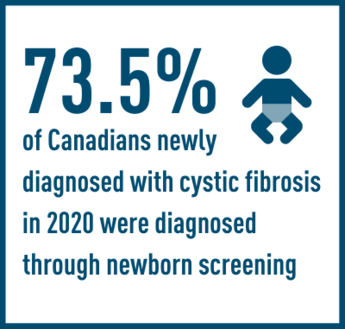Dr. Xiaojie Luan is a Post Doctoral Fellow in the department of anatomy, physiology, and pharmacology at the University of Saskatchewan. Dr. Luan was recently awarded a research fellowship from Cystic Fibrosis Canada to pursue his research study; Origins of cystic fibrosis lung disease: miscoordination among ionocytes, secretory cells and airway submucosal glands. Accepted for publication on The American Journal of Respiratory and Critical Care Medicine (AJRCCM) in April 2024). Read below to learn more about Dr. Luan’s contribution to cystic fibrosis research.Read below to learn more about Dr. Luan’s contribution to cystic fibrosis research.
What are ionocytes? What is the significance of looking at ionocytes, in people with CF?
This term originates in fish, where ionocytes in the gills regulate the transition between freshwater and seawater environments. This powerful cell type was unexpectedly found in the human lung in 2018, representing a breakthrough discovery. These ionocytes hold particular relevance for CF because of their high expression of CFTR, which is the protein associated with CF, expressing over 60% of CFTR in the human lung. Prior to this discovery, it was believed that CFTR was only expressed in secretory and related cells in the lung’s epithelium layer. However, this new perspective on CFTR expression in the lungs highlights potential significance of ionocytes in the context of CF lung disease.
Can you provide a brief overview of your work?
In the first part of my project, I am looking directly at the function of ionocytes. The high expression of CFTR in these cells could be important for people with CF and for discovering alternative treatments for CF patients that are not benefitting from current therapies like Trikafta. To explore these treatments, we need to get a better understanding of how different lung cells work, in hope to discover new effective drug targets. We focus on ionocytes, which are rare (comprising <1% of human lung cells) but appear to be very important. Our lab’s specialized techniques allow us to look at single ionocyte cells and how they function. This type of lung cell was only discovered recently so there is a lot we still need to learn about them.
The second part of my project involves looking at the connection between submucosal glands and surface cells, particularly ionocytes. Submucosal glands are important for making the liquid in our airways that keep our lungs hydrated and prevent sticky mucous and infections in people who don’t have CF. We want to figure out how the glands communicate with surface cells like ionocytes. Our goal is to understand how these two groups of cells collaborate to keep the airway safe. This will help us to understand how this breaks down in CF patients.
In the third area of focus, I use synchrotron technology at the Canadian Light Source in Saskatchewan to study CF development in small airways. Standard clinical X-ray machines aren't powerful enough to have good resolution for these regions (1-2mm), so we need to use the synchrotron’s advanced imaging capabilities. This allows us to look at specific lung sections affected by CF, compare cell behaviors with unaffected areas, and pinpoint factors contributing to CF lung disease development.
What inspired you to pursue research in cystic fibrosis and more specifically, wat inspired you to pursue this specific project?
During my undergraduate studies, I collaborated with Dr. Juan Ianowski on a cystic fibrosis project, coinciding with the launch of the Canadian Light Source. Intrigued by the synchrotron techniques, I joined the Department of Anatomy, Physiology and Pharmacology for my graduate degree, co-supervised by Dr. Dean Chapman and Dr. Juan Ianowski. I aimed to apply the synchrotron to study human diseases. After attending the North American CF Conference, I was fascinated by the convergence of researchers around this unique genetic disease, and the collaboration between basic and clinical research, shown by breakthroughs like ivacaftor.
After my PhD, I collaborated with Dr. Julian Tam, director of the Saskatoon adult Cystic Fibrosis clinic, delving into clinical aspects and patients’ perspectives on research. Engaging with patients, their insights, complications, and willingness to contribute further ignited my passion for CF research. I am also deeply interested in synchrotron capabilities, driving my choice to pursue this specific CF Canada research fellowship.
Can you explain the significance that this project will have to both the research community and those living with cystic fibrosis?
There are two areas that I think are beneficial for future patients. First, as I mentioned, the ionocyte is the new cell type and has really high CFTR expression therefore it may be the target for the next generation of CF molecular therapies. To study and describe the function of ionocytes may be important for the development of new therapies for those CF patients.
What do you see changing over the next 5 to 10 years for those living with cystic fibrosis?
I think the current Trikafta treatment that is available to many patients is pretty amazing, especially the wide availability for such a great medicine. However, there are some patients that can’t benefit from this type of therapy. I believe in the next 5 years, the focus will be more on gene and molecular therapy for CF and other diseases. This area of research is beginning to move very fast, so I believe in five years, those who are not currently benefitting from Trikafta will have new therapies that can help them fight the CF disease.
What key messages do you want the CF community to take away from your research?
I believe that using the basic knowledge gained from scientific research can really help patients. Scientists who do basic research try to understand how different cells work, and this information becomes really important for creating new treatments in the future. So, supporting this kind of research is a very important step in making better treatments for patients.


.jpeg)


